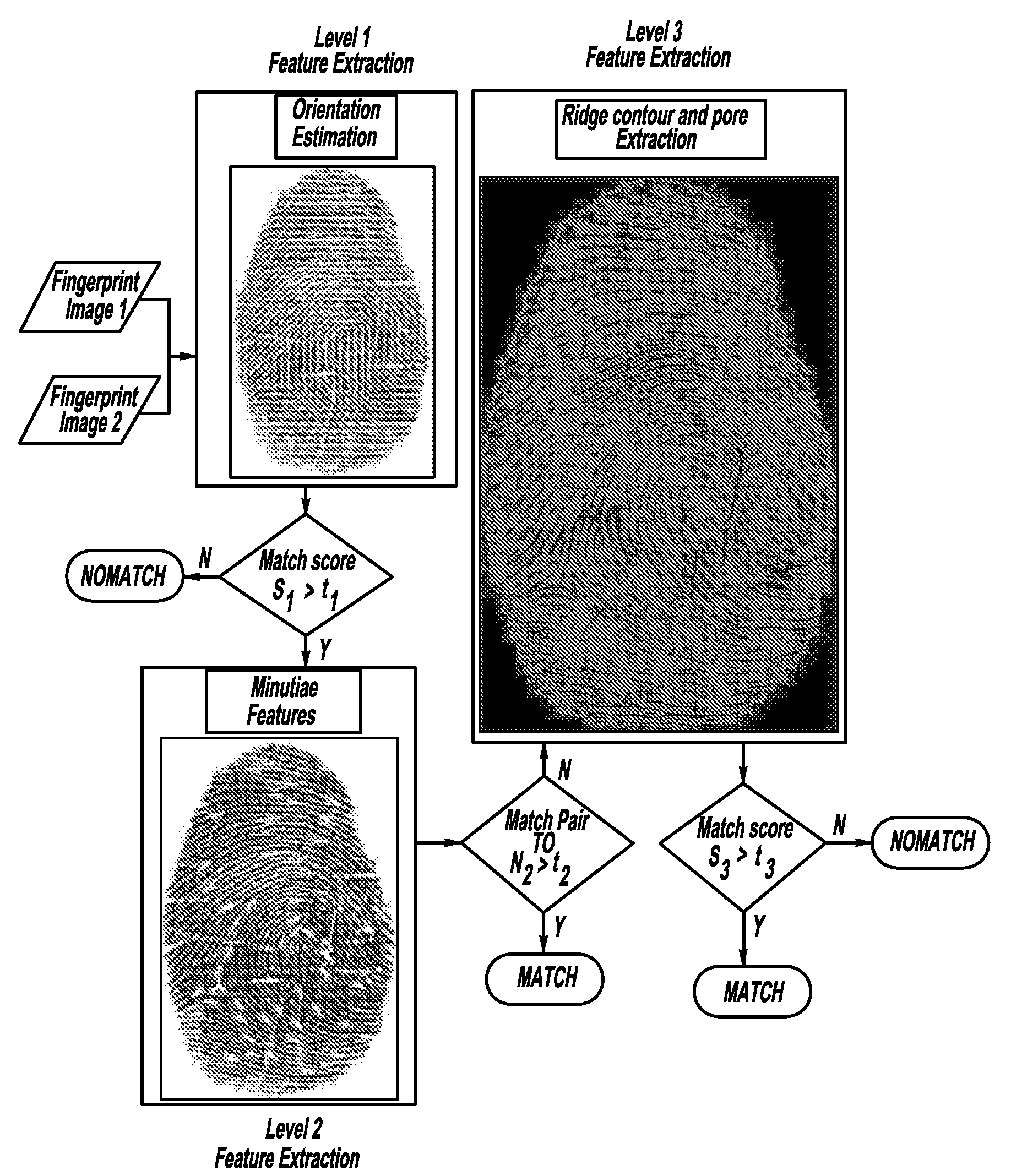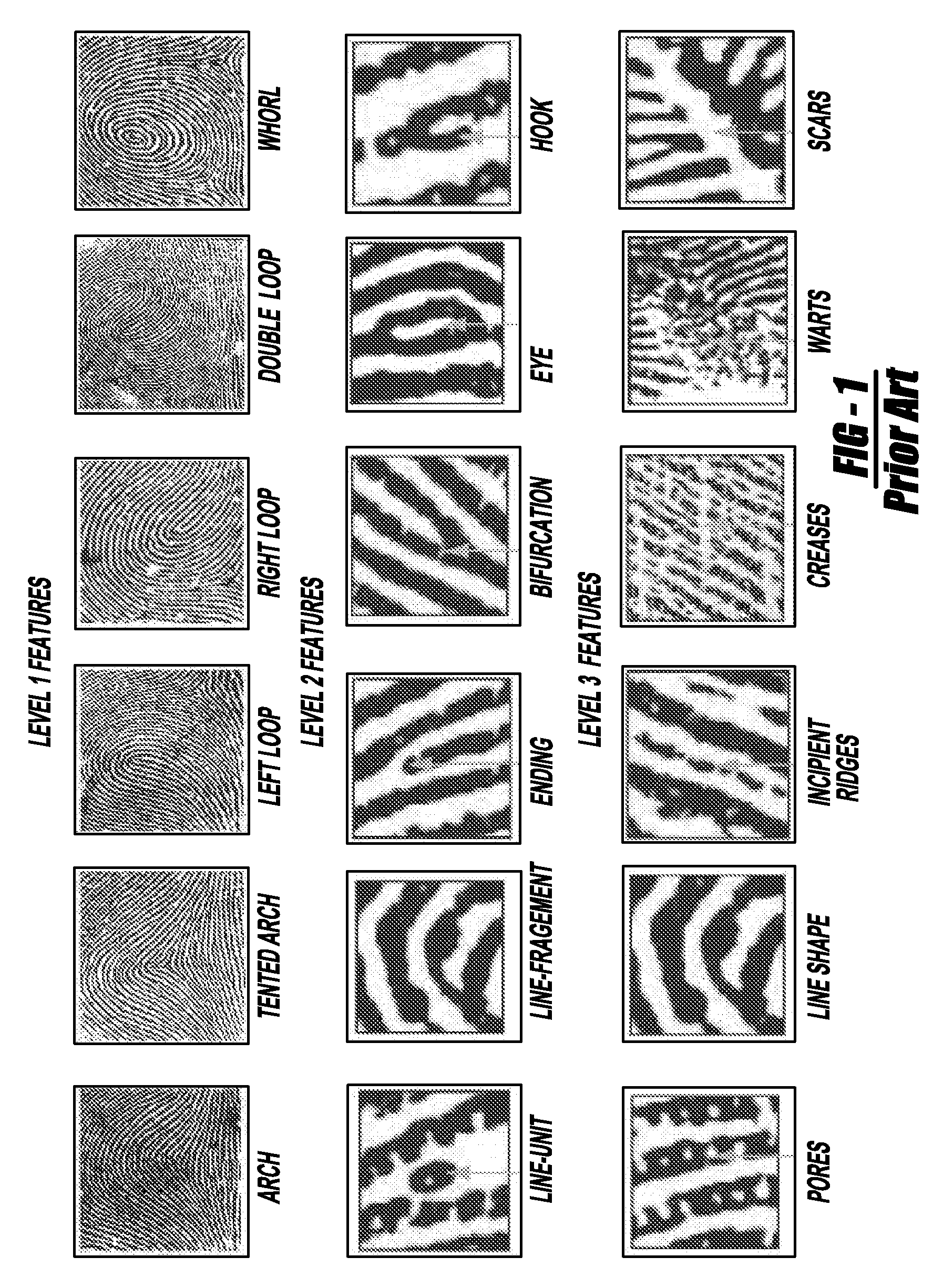Level 3 features for fingerprint matching
- Summary
- Abstract
- Description
- Claims
- Application Information
AI Technical Summary
Benefits of technology
Problems solved by technology
Method used
Image
Examples
Embodiment Construction
[0056]The following description of the preferred embodiment(s) is merely exemplary in nature and is in no way intended to limit the invention, its application, or uses.
[0057]In accordance with one aspect of the present invention, Level 1, Level 2 and Level 3 features in a fingerprint image were mutually correlated. For example, the distribution of pores was not random, but naturally followed the structure of ridges. Also, based on the physiology of the fingerprint, pores were only present on the ridges, not in the valleys. Therefore, it was essential that the locations of ridges were identified prior to the extraction of pores. Besides pores, ridge contours were also considered as Level 3 information. During image acquisition, it was observed that the ridge contour was often more reliably preserved at 1000 ppi than the pores, especially in the presence of various skin conditions and sensor noise (e.g., see FIG. 10). In order to automatically extract Level 3 features, namely, pores a...
PUM
 Login to View More
Login to View More Abstract
Description
Claims
Application Information
 Login to View More
Login to View More - R&D
- Intellectual Property
- Life Sciences
- Materials
- Tech Scout
- Unparalleled Data Quality
- Higher Quality Content
- 60% Fewer Hallucinations
Browse by: Latest US Patents, China's latest patents, Technical Efficacy Thesaurus, Application Domain, Technology Topic, Popular Technical Reports.
© 2025 PatSnap. All rights reserved.Legal|Privacy policy|Modern Slavery Act Transparency Statement|Sitemap|About US| Contact US: help@patsnap.com



